- Add a little more alcohol and put the mixture in a jar.
- Do the same with the yellow leaves.
- Let the leaves macerate in the jars with alcohol for a few hours.
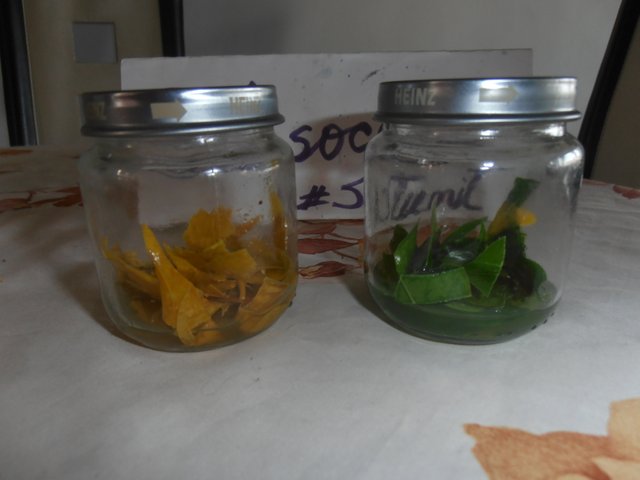
- Put a little bit of both leaf extracts in two glasses.
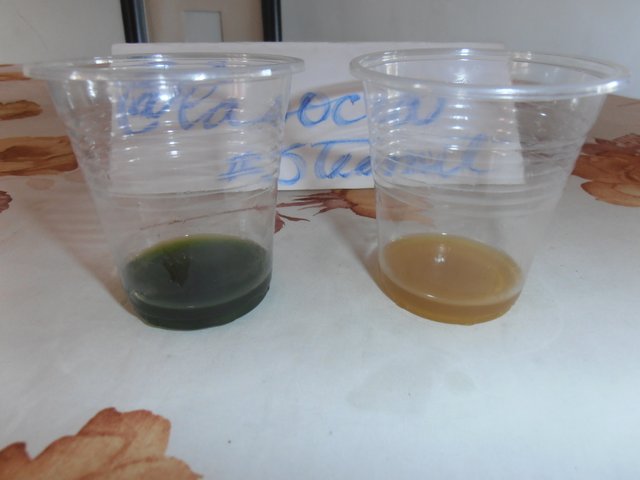
- Cut two strips of filter paper and insert them into the cups hanging from a straw.
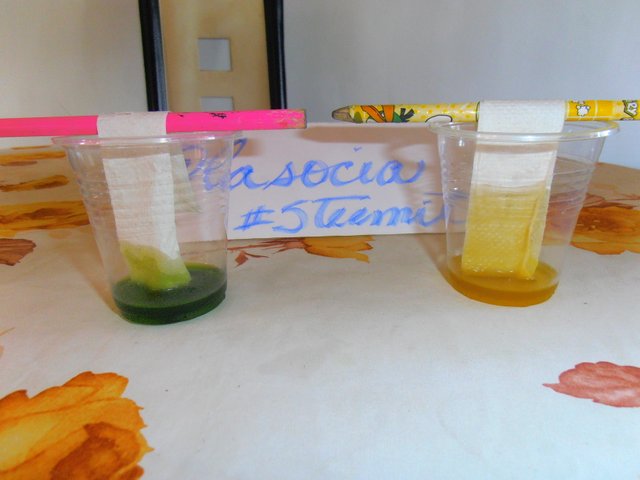
- Use zeal to stick the paper to the straw. Wait several hours, we leave it all night.
- Observe the bands of colors, are the pigments of the leaves.
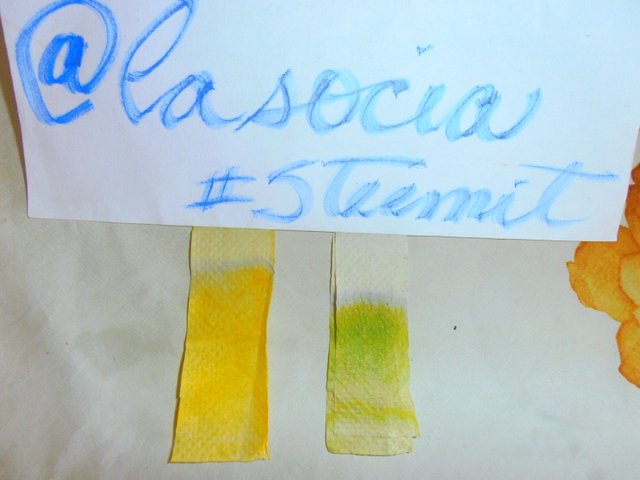
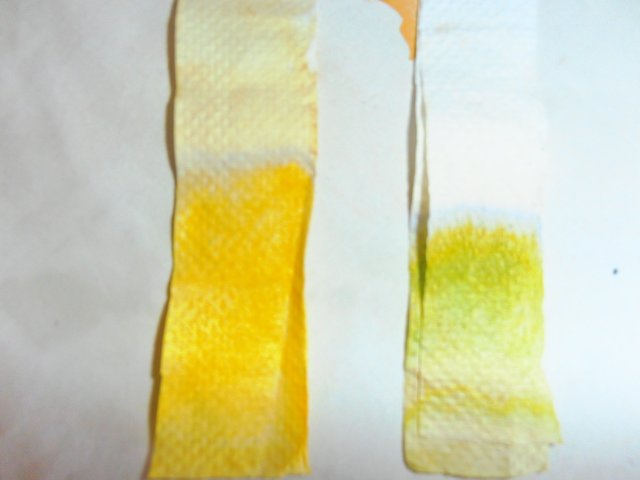
What has happened?
The leaves are the place where the food of the tree is cooked, this process is called photosynthesis. Let's see what ingredients are needed:
The water and dissolved mineral salts in it that travel from the ground to the leaves. Carbon dioxide, CO2, from the air that is absorbed by the leaves. Pigments that capture the sun's energy. The most important is chlorophyll which is green, but there are other pigments such as xanthophylls (yellow and brown) and carotenes (orange and red). The solar energy captured by chlorophyll and its auxiliary pigments is used to transform water and carbon dioxide into glucose (a sugar) and oxygen. This process is photosynthesis.
In autumn the days are shorter, this tells the tree that there is less left for winter. The trees begin to close the kitchen, and get rid of their leaves. In winter they will live on stored food reserves. The production of chlorophyll stops and the other pimentos present in the leaves begin to be seen. Before they were hidden by the intense green color of chlorophyll.
Chromatography is a technique used to separate mixtures. Alcohol, with the disulete pigments in it, is ascending through the paper as a consequence of capillarity or capillary action. The less soluble pigments and with greater mass remain stuck to the paper below, while the more soluble and lower mass continue to rise with alcohol. As each pigment has a different degree of solubility and different mass, colored strips are formed on the paper strip as the pigments are deposited.
 Children love to do experiments. With them, while having fun, they learnand ask questions about the world around them. Among its many benefits, scientific exploration feeds the child's natural curiosity, fosters his interest in science, stimulates reasoning and logic, improves his ability to solve problems, increases his self-esteem and prepares them to understand more complicated scientific concepts in the future.To enjoy science is not necessary to have a laboratory, you will be surprised by the amount of experiments that can be done with some home materials. So do not wait any longer, get to work and have fun with your children or students.I hope that this article has been of your interest and help, and I hope you in my next publication!Regards!!!
Children love to do experiments. With them, while having fun, they learnand ask questions about the world around them. Among its many benefits, scientific exploration feeds the child's natural curiosity, fosters his interest in science, stimulates reasoning and logic, improves his ability to solve problems, increases his self-esteem and prepares them to understand more complicated scientific concepts in the future.To enjoy science is not necessary to have a laboratory, you will be surprised by the amount of experiments that can be done with some home materials. So do not wait any longer, get to work and have fun with your children or students.I hope that this article has been of your interest and help, and I hope you in my next publication!Regards!!!

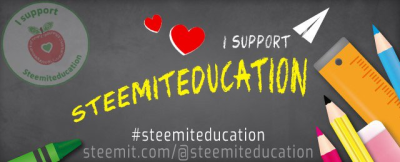

Posted from my blog with https://wordpress.org/plugins/steempress/
http://lasocia.vornix.blog/2018/10/23/science-at-home-fun-homemade-experiments-for-the-little-ones-lets-experiment-with-chromatography/ 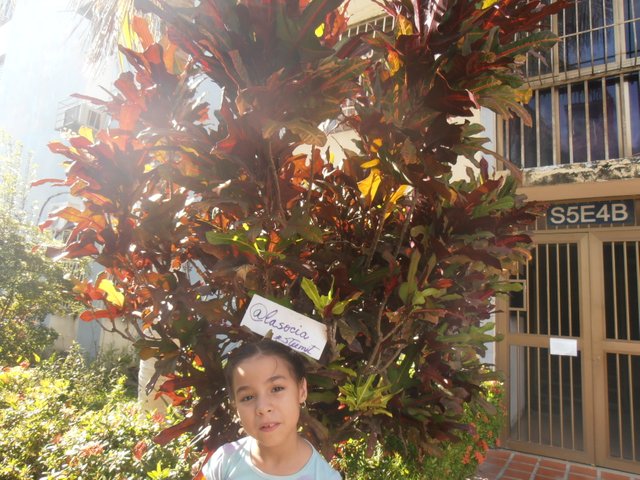
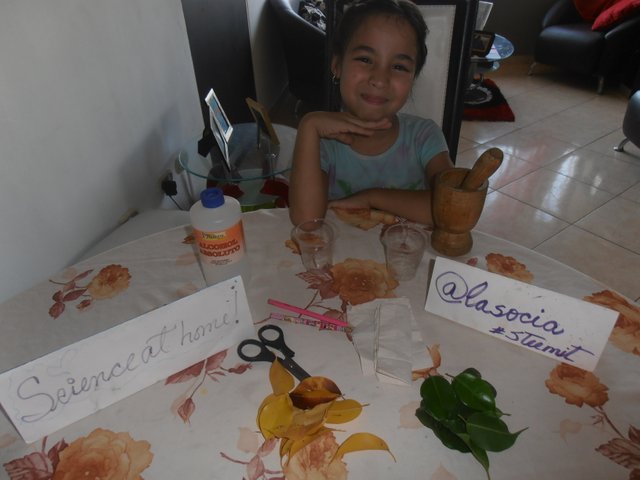









Congratulations! Your post was selected by the @dropahead Curation Team (dCT)
It is just awesome how you manage to explain with that much simplicity the concepts involved in that experiment. My sincerest congratulations! I'm sure that the little girl might be a great chemist some day.
Best regards.
@dropahead - Supporting your STEEM adventure
If you would like to support the educational community by delegating to @steemiteducation, please click on any of the following links. This will ensure that more teachers are supported on a daily basis.
100SP 200SP 300SP 400SP 500SP 750SP 1000SP 2000SP 3000SP 4000SP 5000SP 10,000SP 25,000SP